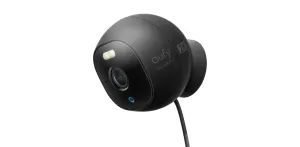Setting the Stage for a Safer Home: A Wireless Security Camera Setup Guide
Let’s face it, setting up a security system sounds about as fun as scheduling a root canal. But after a series of pesky raccoons turned my backyard into their personal buffet night after night, I decided it was time to install some wireless security cameras. So, I traded my usual Saturday binge-watching for what I assumed would be a quick DIY project. Little did I know, it would turn into my own mini-adventure, complete with triumphs, frustrations, and a few face-palm moments.
Nevertheless, I learned a lot. Here’s a humorous, but pretty darn effective guide on how you can connect your wireless security cameras to your Wi-Fi without losing your mind, and possibly entertain the neighbors with your rooftop antics.
Understanding Your Wireless Security Camera
Before you embark on this little technological journey, it’s crucial to understand what you’ve got and what you need. Wireless cameras are fantastic because they communicate over your Wi-Fi network, eliminating the need for wires running all over your home. This means they need two things: power and a solid Wi-Fi connection.
- Make sure your camera is compatible with your Wi-Fi standards (like 802.11a, b, g, n, or ac).
- Most will need a power outlet, although some run on batteries.
- Check if your camera requires an app for setup and operation.
If you're just starting out or looking to upgrade from older systems, it may be worth exploring the benefits of IP security cameras for home for their flexibility and ease of use.
Choosing the Perfect Spot
Deciding where to place your cameras is like choosing where to hang art on your walls—it’s all about location, location, location. You want to cover the main areas, but also consider power source availability unless you’ve gone the battery route. In my case, I started with grand plans of gate and front door coverage, only to realize the nearest power outlets were in no-man’s land. So, adaptability became my new best friend.
- Cover Main Entry Points: The front door, back door, and first-floor windows are prime spots. For precise coverage, consider using bullet cameras to monitor specific entry points.
- Don’t Forget the Indoors: Common areas like living rooms or hallways are spots burglars typically pass through. If you’re unsure where to start, these placement tips for indoor home security cameras can be a big help.
- Consider Wi-Fi Range: Make sure your camera isn’t too far from your router. If it is, consider getting a Wi-Fi extender. (pcmag.com)
Getting Set Up
Now, let’s talk about the nitty-gritty: setting everything up without blurting out a stream of expletives. Start by reading the manual—yes, really. I learned the hard way that skipping this step often leads to backtracking and unnecessary frustration.
- Install the Cameras: Whether it involves some simple drilling or just peeling off adhesive tape, get your cameras physically in place.
- Power Them Up: Connect them to the power source or make sure their batteries are charged.
- Connect to Wi-Fi: This is usually done through the camera’s app. Ensure your phone is connected to your home network and follow the step-by-step in the app.
I must admit I had a couple of 'oops' moments here—like when I tried to connect my camera to the Wi-Fi without plugging it in first (a real genius move, I know). But once they were connected, watching my yard come alive from my phone’s screen felt like launching a NASA shuttle.
Troubleshooting Common Hiccups
Just when I thought I was done, the dreaded "camera offline" message appeared. Here are a few common issues you might run into and how to fix them:
- Weak Wi-Fi Signal: If your cameras keep disconnecting, they might be too far from the router. Try moving them closer, or use a Wi-Fi extender.
- Software Glitches: Sometimes, simply restarting the camera or the app can resolve these glitches.
- Update Firmware: Keep your camera’s firmware updated to ensure smooth running.
Maintaining Your Security Cameras
Think of your wireless cameras kind of like plants—they need a little care to keep doing their job well. Regularly check that:
- The cameras are clean and free from dust and spiderwebs.
- The lenses aren’t obstructed by overgrown foliage or new decorations.
- They’re still securely mounted and haven’t been tampered with. (pcmag.com)
If you're looking to get even more creative with your setup, controlling your PTZ camera remotely can give you dynamic coverage without repositioning.
And there you have it. Your very own guardian eyes, minus the creepy feeling of being watched (hopefully). With these cameras up and running, my raccoon saga has turned into nothing more than a late-night comedy show on my phone screen—and I can live with that.
Your New View at Home
Installing and maintaining a wireless security camera system might sound daunting, but it’s truly manageable—and can even be kind of fun. Remember, the peace of mind and security of knowing your home is monitored outweigh the learning curve of setting everything up.
I’m not saying I’m ready to switch careers and go into security tech, but let’s just say I no longer cover my eyes during the high-tech scenes in spy movies. So, arm yourself with a little patience, maybe a good drill, and possibly a beer for a post-installation celebration. Here’s to a safer, raccoon-free home!
And hey, if you ever need someone to decipher that mysterious 'device offline' error, you know where to find me.





